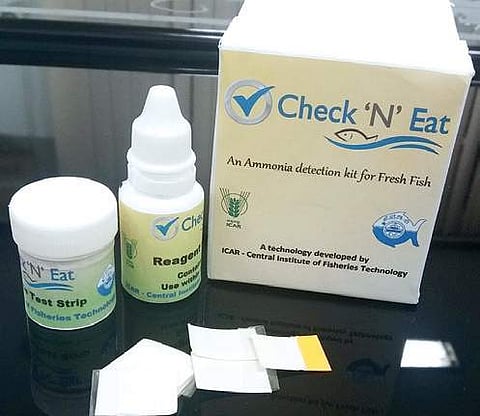

KOCHI: If you are reluctant to eat fish in the wake of cyclone Ockhi, the Central Institute of Fisheries Technology (CIFT) has come up with an innovative scientific kit, using which the levels of ammonia and formalin can be checked within minutes at home or the market. The Rapid Detection Kit has been developed by the quality assurance wing of CIFT after witnessing concerns among the public regarding the quality of fish available in the market.
Speaking at a press meet, CIFT director Ravishankar C N said the kit was developed after six months of research and testing activities. “The fisheries department is constantly demanding us to develop a kit by which chemical contamination of the fish can be detected. The kit will be launched by the fisheries minister later. After which we will transfer the technology to a company selected for mass production. Once the kit enters mass production, it will cost only around Rs 25,” he said.
The kit has been developed by scientists Laly S J and Priya E R. There are two separate kits for detecting the presence of formalin and ammonia in fish. The kit will have test strips and a bottle of chemical solution. After swabbing the strip on different parts of the fish, one drop of reagent solution should be dropped on the strip. After two minutes, the colour of the strip will start to change.
If the presence of ammonia is in excess of 300 mg per kg, the colour will become deep blue. That means the fish is highly contaminated. If the colour is light blue, the level of ammonia will be between 100 and 300 mg, which means the fish is safe for consumption. If the level is less than 100 mg, the colour on the strip will be light green.
In the formalin detection kit, the same procedure has to be adopted. If the colour that appears on the strip is light pink, formalin is absent in the fish. If the strip turns green and develops further to become deep blue, the level of formalin will be between 20 to 100 mg per kg, which means the fish is not safe for consumption.
Though scientists have not revealed the chemical used in the strip, they claim it is a simple technology of chemical reaction.
“The strip and the reagent have around six chemicals. Even though similar kits are available abroad, they are very expensive,” said scientist Priya.